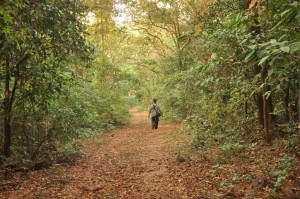 The best part about travelling to a less popular wildlife sanctuary is that you really have the forest to yourself, without a hoard of tourists sitting in safari jeeps following every trail that might give them a glimpse of the tiger or the lion. That is why instead of the Corbetts and the Ranthambores, my husband and I decided to literally take the road less travelled to Phansad Wildlife Sanctuary, about 150 kilometres away from Mumbai city along the Konkan coast. As one of the 35 protected areas in the State of Maharashtra, Phansad has everything that you expect in a wild setting without the touristy chaos.
The best part about travelling to a less popular wildlife sanctuary is that you really have the forest to yourself, without a hoard of tourists sitting in safari jeeps following every trail that might give them a glimpse of the tiger or the lion. That is why instead of the Corbetts and the Ranthambores, my husband and I decided to literally take the road less travelled to Phansad Wildlife Sanctuary, about 150 kilometres away from Mumbai city along the Konkan coast. As one of the 35 protected areas in the State of Maharashtra, Phansad has everything that you expect in a wild setting without the touristy chaos.
Flora and Fauna
The sanctuary is spread across an area of around 52 sq Km. It is best known for its avifauna and houses about 150 species of birds including the Pied Hornbill, the three toed Kingfisher, the Red Wattled Lapwing, etc. Although the sanctuary is supposed to be a home to leopards, the sightings are rare. Besides the leopard, other major fauna found here are the Hyena, Jungle Cat, Barking Deer, Bonnet Macaque, Wild Boar and the elusive Malabar Giant Squirrel. There are about 90 species of Butterflies and a number of venomous and non venomous snakes found here too. In fact there is an organization called the ‘Sarpa-Mitra’ (which means ‘Friend of Snakes’) that rescues the snakes that are found in the nearby villages of Murud and Roha and release them into the sanctuary. Numerous species of plants have also been identified here.
Getting there
Nearest Railhead is at Roha, at about 30 kmts from the Sanctuary. If you plan to go by road, Phansad is about 150 kmts drive from Mumbai via Alibaug and Pen.
Best Time to visit
Phansad can be visited all the year around, but the best time to visit is from October to March.
 Our Phansad Adventure
Our Phansad Adventure
We decided to go via a scenic road to Kashid beach which is around 20 km away from Phansad. Past a beautiful lake full of lotuses, a forest on the left and the Konkan Coastline dotted with Palm trees on the right, we reached Kashid late in the evening and checked into one of the many guest houses that are available near the beach.
The next morning began with the rewarding sight of a pair of Spotted Doves, right in the hotel’s backyard. Looking at them was quite a pleasant change from the grey pigeons that we are so used to watching in the urban areas.
As our day of exploration began we also caught sight of many Hanuman Langurs and a majestic Greater Coucal sitting on a tree near the road commonly known as the Bhardwaj.
After about half an hour’s drive, we reached Supegaon, the entrance to the Sanctuary. Although the board outside displayed charges for the vehicles, no vehicles are now allowed inside the Sanctuary so as to not disturb the wildlife.
After paying the entrance charges of INR 20 per person and car parking charges of INR 50 right outside the gate, we walked out straight into the wild.
Inside the sanctuary
There are four nature trails in the forest. The forest officer at the gate advised us to follow the sign boards that were placed at an interval of every half a kilometre and take the trail to a water hole at Chikalgun, 6 Km inside the forest.
The minute we stepped inside the gate familiar jungle sounds began to fill the air. A cicada was loudly announcing his presence to his would-be mate, while a couple of butterflies, the common Bush browns flitted across our path.
Every 15 minutes or so, the trees overhead would rustle loudly and we craned our necks hoping to spot the elusive Malabar Squirrel, but alas, the creature, it seems did not want to make it so easy for us. A lot of other butterflies too kept flying but never stopping long enough for a picture moment.
Suddenly we saw a movement on the ground below us amongst the dead brown leaves and we stiffened. There was a beautiful one horned grasshopper hopping between the leaves. We sat down on the floor and slowly photographed it without causing it to fly away.
One thing that was clear was that Phansad was definitely a lesser visited sanctuary. There were no other visitors besides us that day. Another indicator was that the entire trail was criss-crossed with spider webs which we unwittingly kept walking into and getting on our clothes and faces all the way! A spider that really got our attention was the brightly colored Giant Wood Spider meditating and waiting for its prey proudly in its web, which was a fantastic work of art.
Meal for the Vultures
Phansad Wildlife Sanctuary is a part of the Vulture Restaurant Project that involves feeding these endangered birds with drug-free cattle carcasses and thereby encouraging them to breed. This project was undertaken after it was brought to light that these birds were dying and their numbers were reducing at an alarming rate owing to the use of Diclofenac, a veterinary drug used in the treatment of cattle. The restaurant is basically a man made waterhole in a clearing along which the cattle carcasses are left for the birds. There was a huge board near the clearing that explained the purpose of the Vulture Restaurant in Marathi, the local language. However there were no Vultures to be seen that day around the waterhole.
Along the way to Chikalgun, we came across many noisy Red-Wattled Lapwings, a couple of red-vented bulbuls, Brahminy Kites circling in the sky, a couple of snakes that slithered away hastily into the rocks as we approached, snails, a common Indian toad complete with its warts and numerous butterflies and skinks.
Some of the remarkable flora that we saw included Teak trees, Drosera Indica, the insectivore, Jatropha podgarica, Spiral Ginger, Bracket Fungi and wild flowers such as pretty pink begonias and white Rhamphicarpa longiflora.
By the time we reached Chikalgun, we were hot and sweaty and panting. After exploring the flora and fauna at the pretty water hole and resting for some time, we slowly made our way back to Supegaon.
On the way back, suddenly we spotted a Harvester Ant Hill that we had missed earlier. The Nest was an amazing architectural structure that looked very much like a man created maze with several passages heading off to different directions. The ants could be seen scurrying about their business as usual. After clicking the Ant Hill, we moved on and reached Supegaon, famished and tired but happy with the day’s excursion and experience.
As we reached the gate, little did we know that we were yet to receive the icing on the cake. A bright yellow bamboo pit Viper was coiled on a tree right at the entrance of the gate at Supegaon like a sentinel proclaiming & protecting the Sanctuary as his territory. The Pit Vipers are venomous and are known to strike out if offended. It was therefore difficult photographing the Viper, but we managed to do it from a safe distance without disturbing it and then left it to its business.
Other Places around Phansad
While at Phansad, one can visit the clean and white sand beach of Kashid. Other places that one can visit are the historic impregnable Janjira fort, Janjira caves, Birla Temple near Salav village, Korlai Fort and Lighthouse and Alibaug beaches.
More Related Stories,
Six Reasons Why vultures may be Dying in India
Endangered Fish Species Thrive again in Maharashtra River
Images courtesy Shilpi Gemavat and NisargBhramanIndia






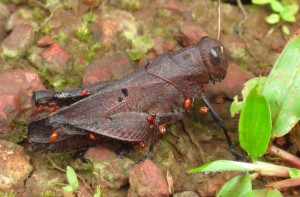
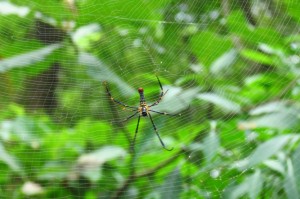
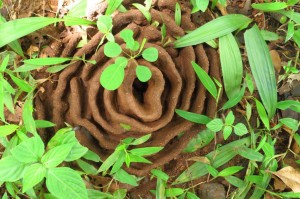
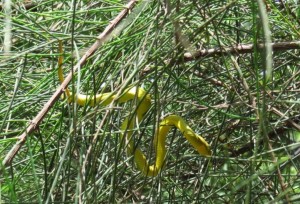
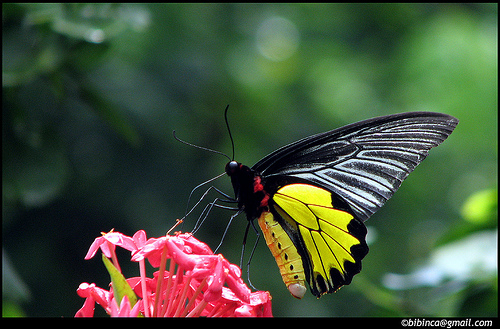
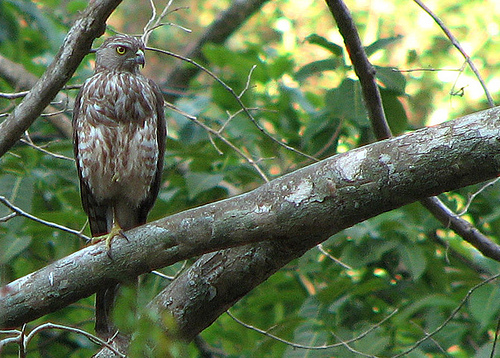
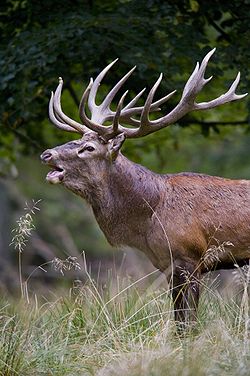
2 thoughts on “Phansad: The lesser known Wilderness”